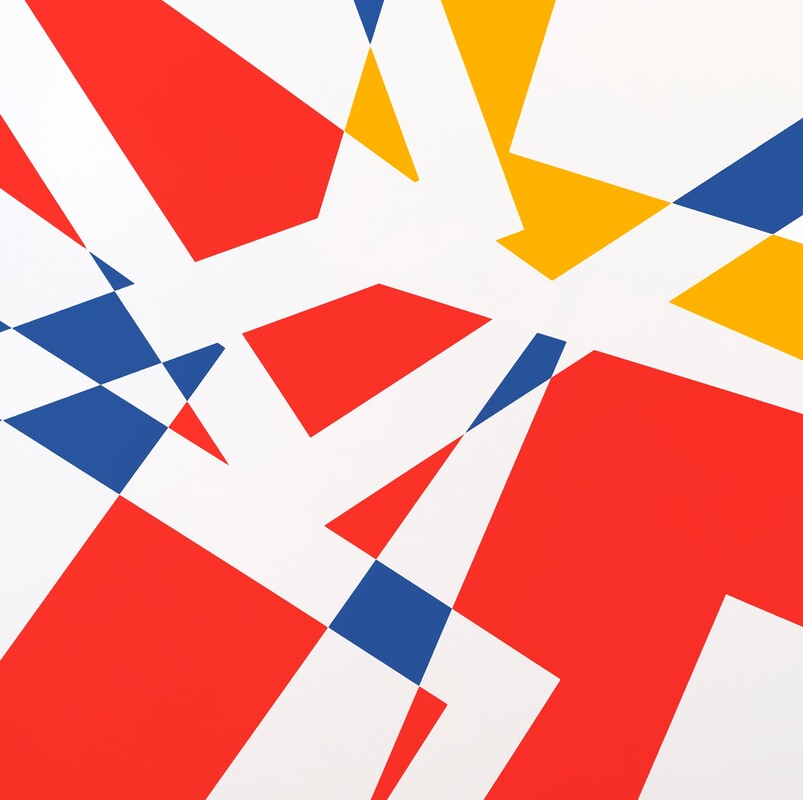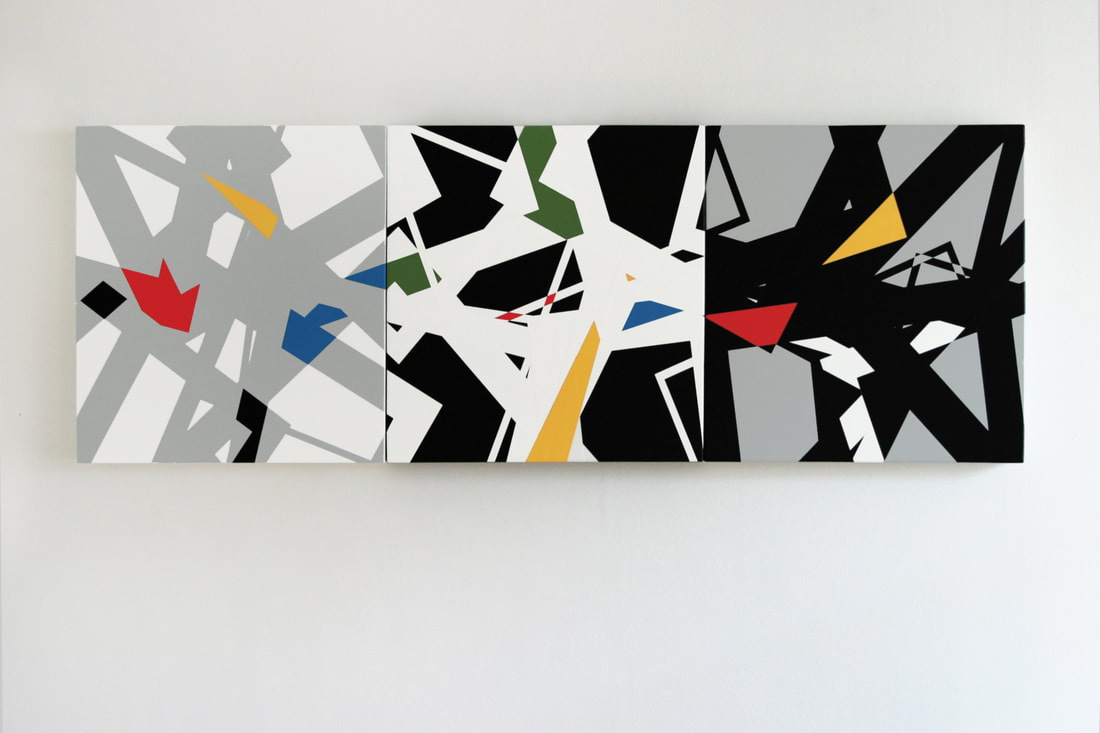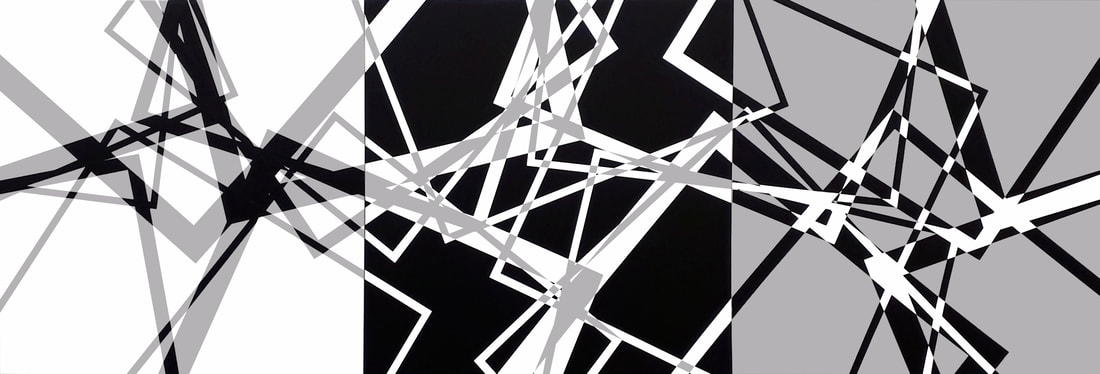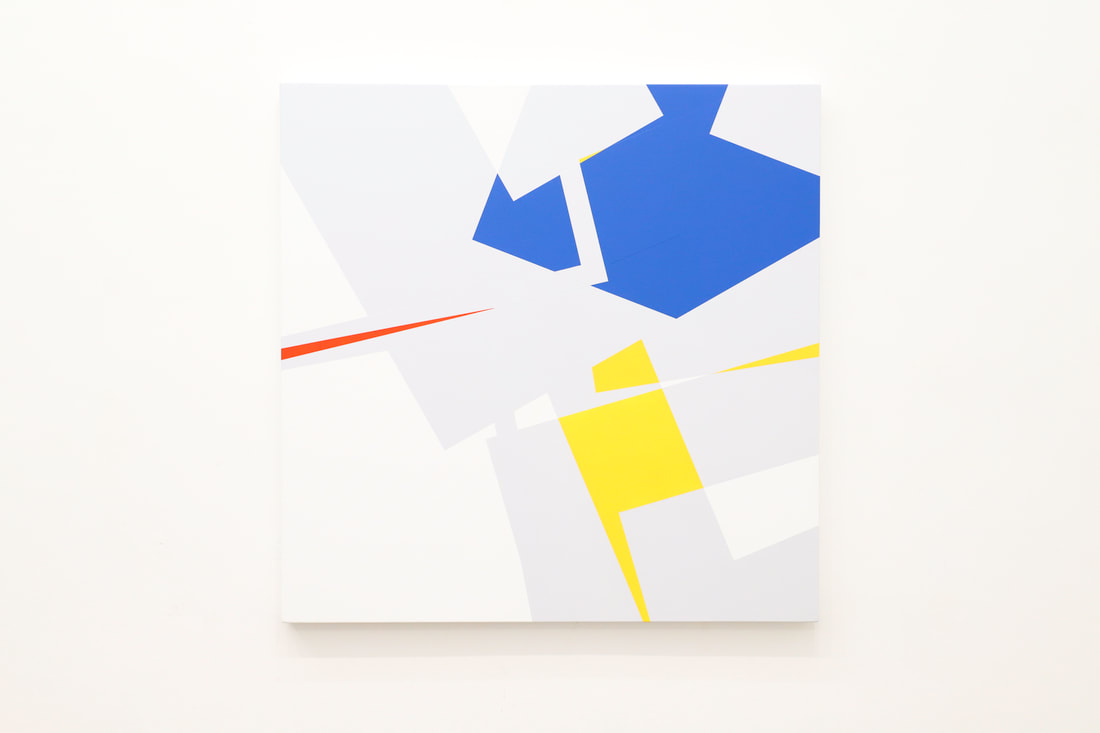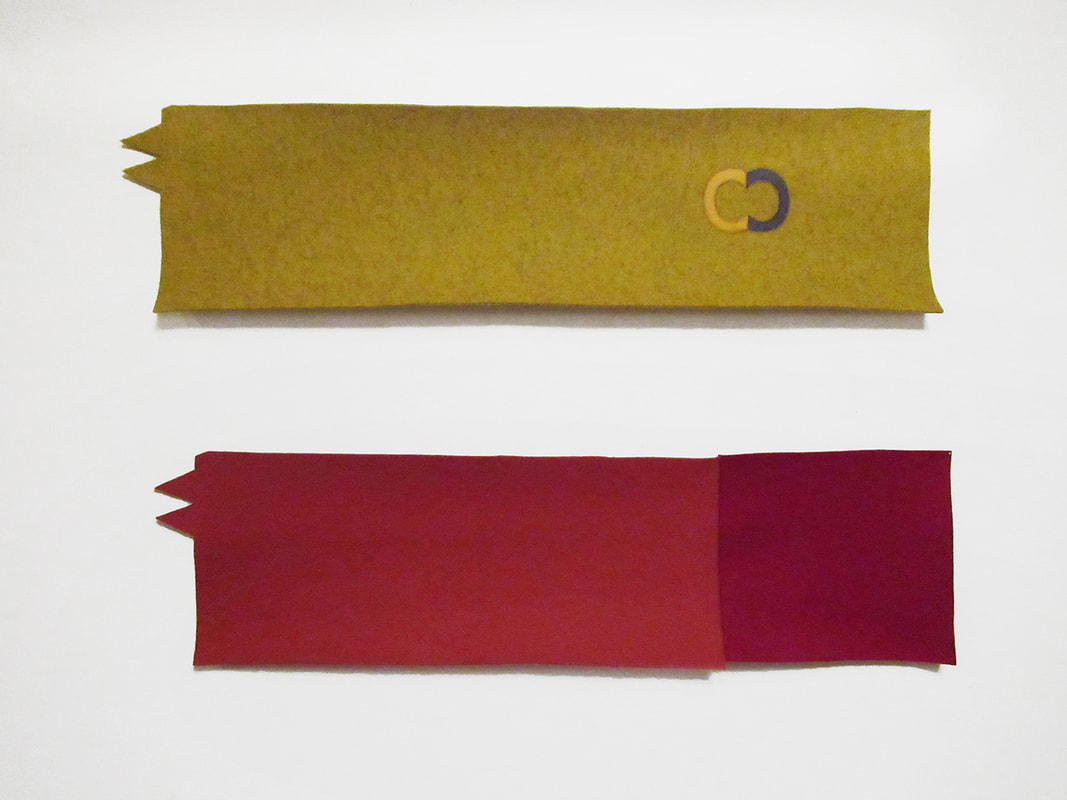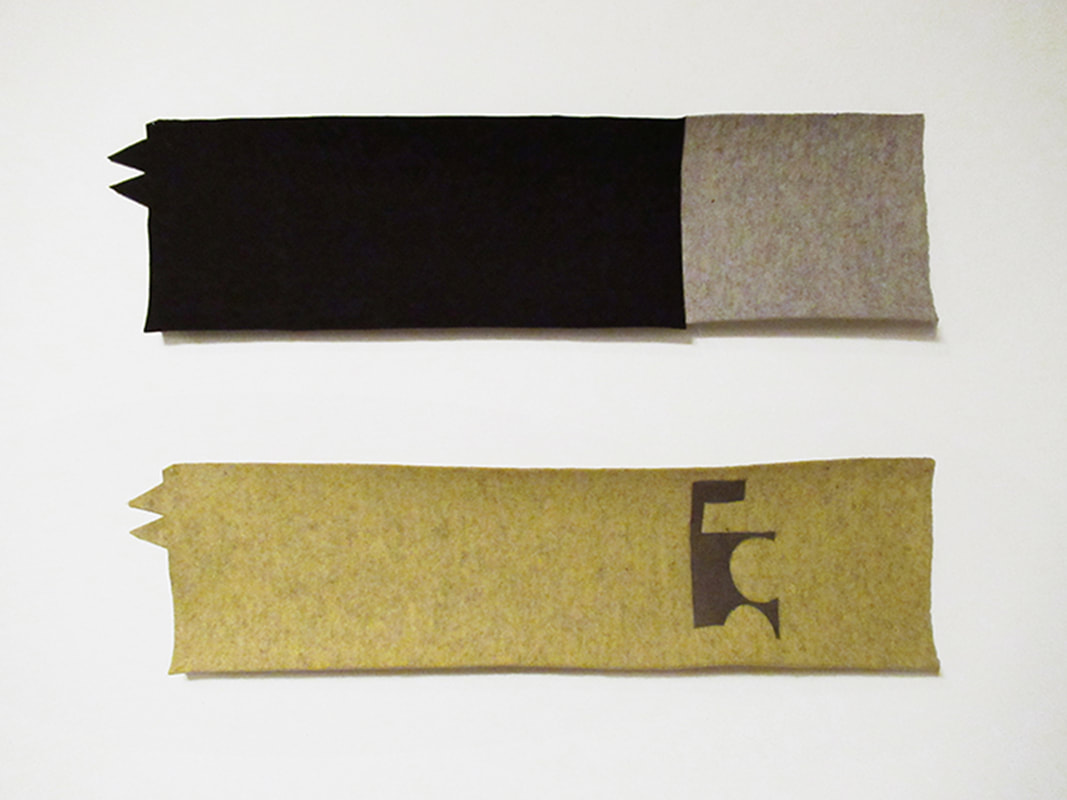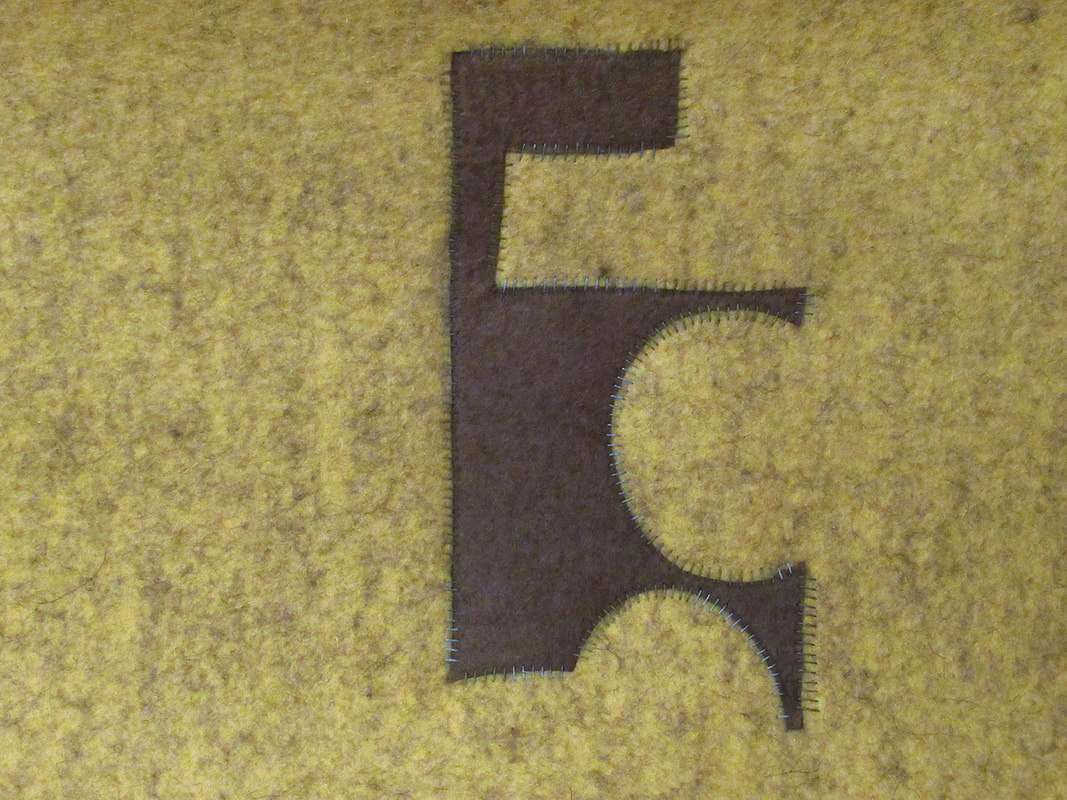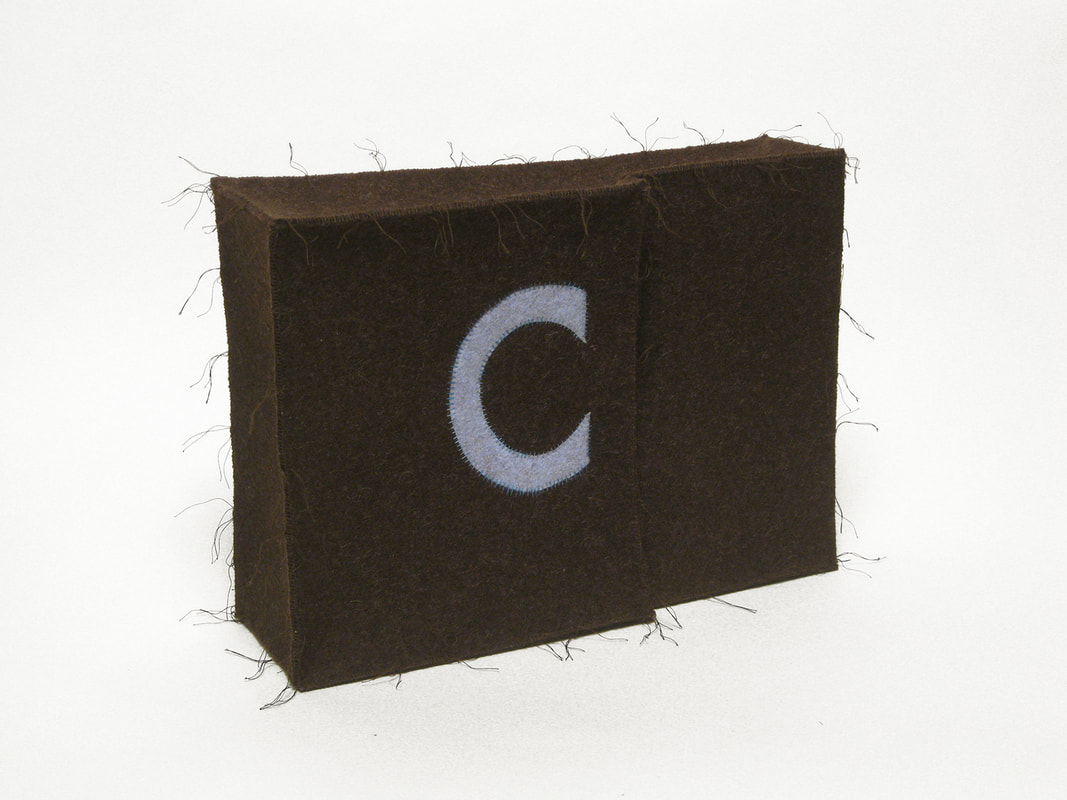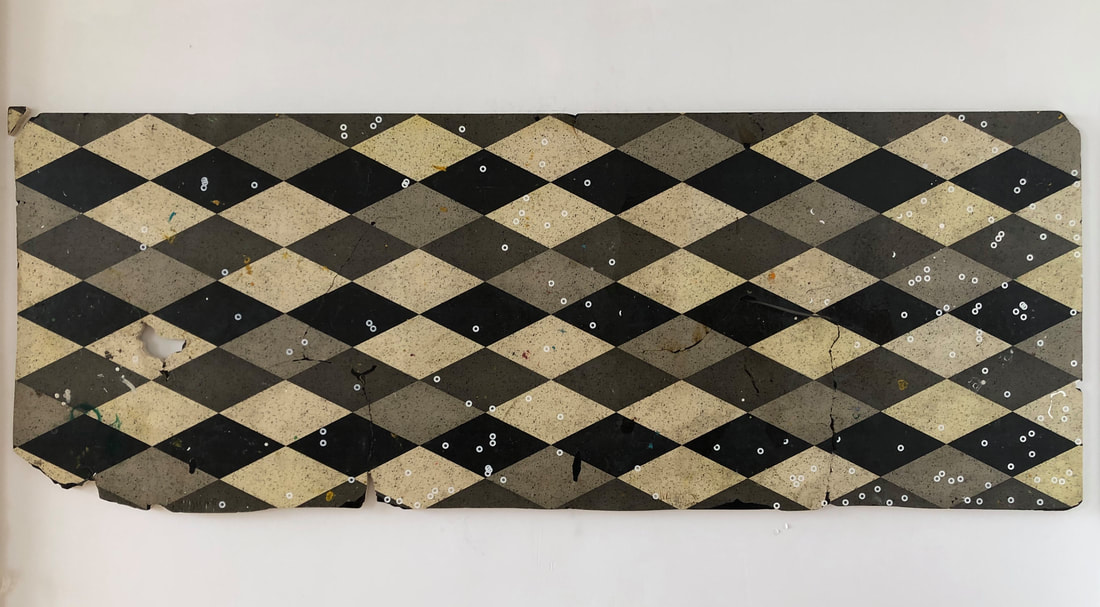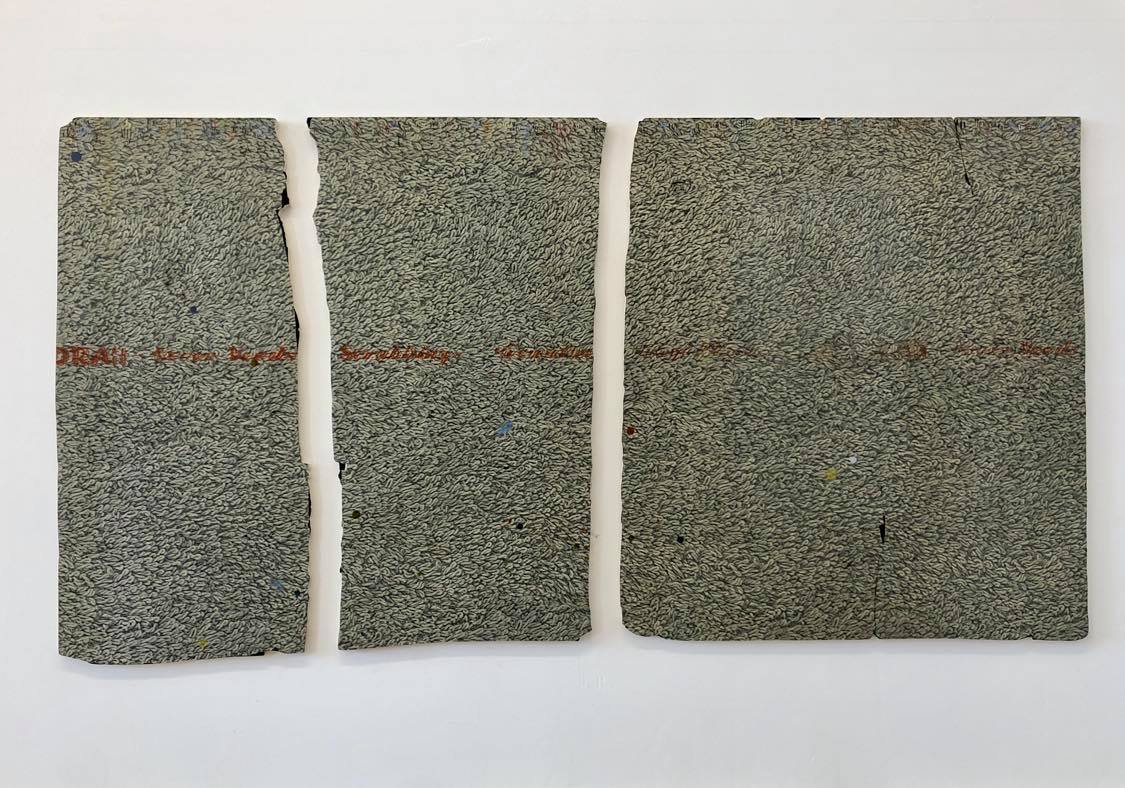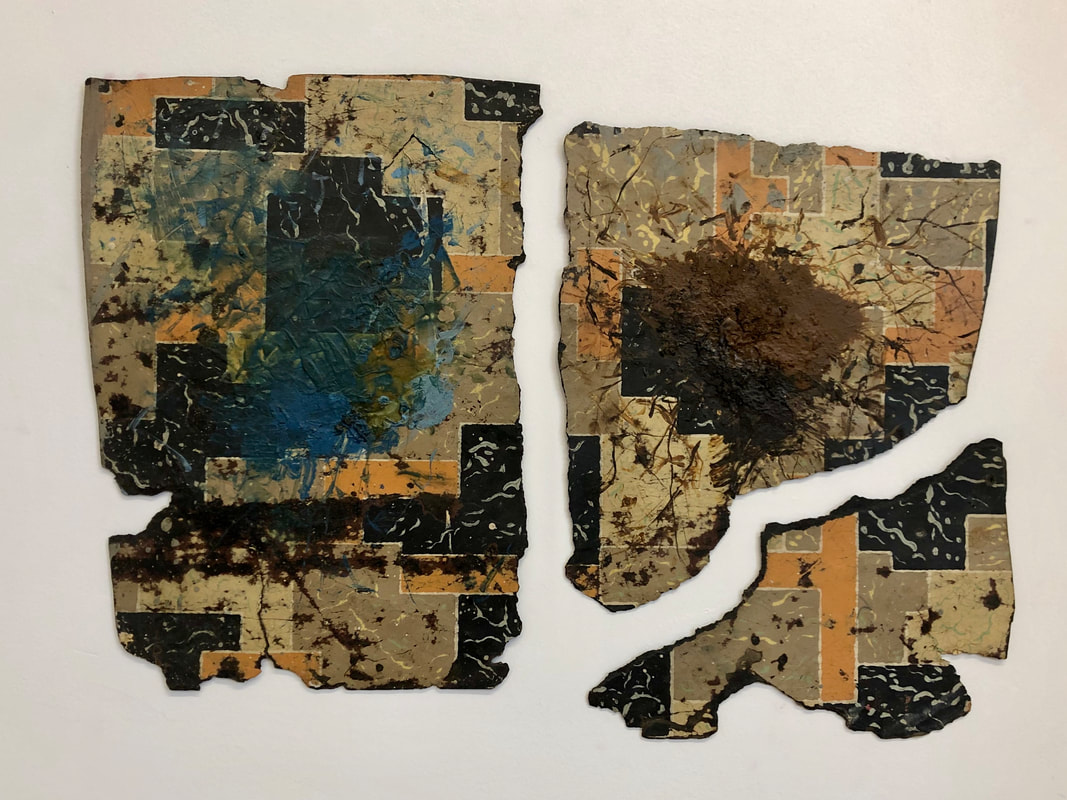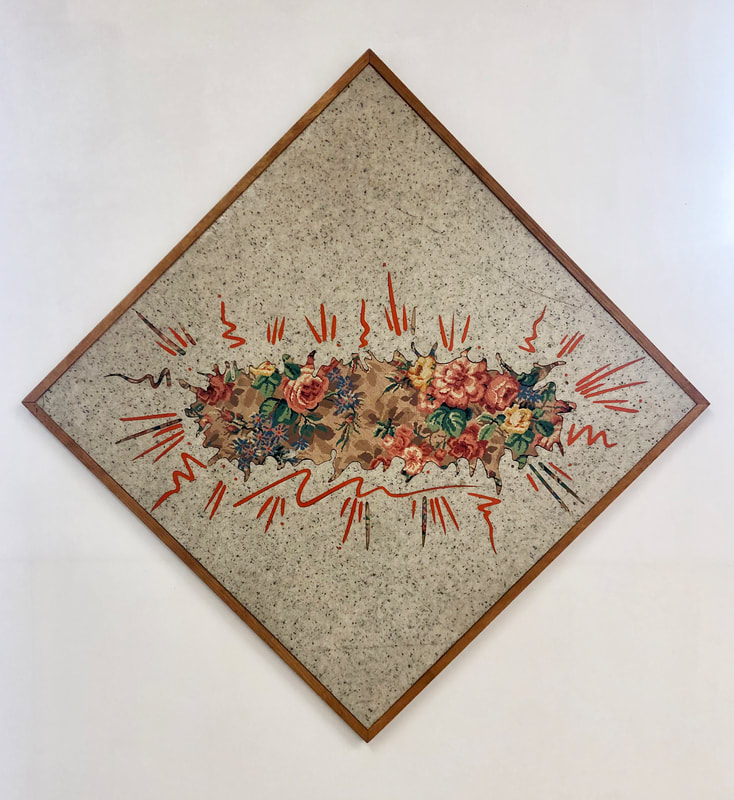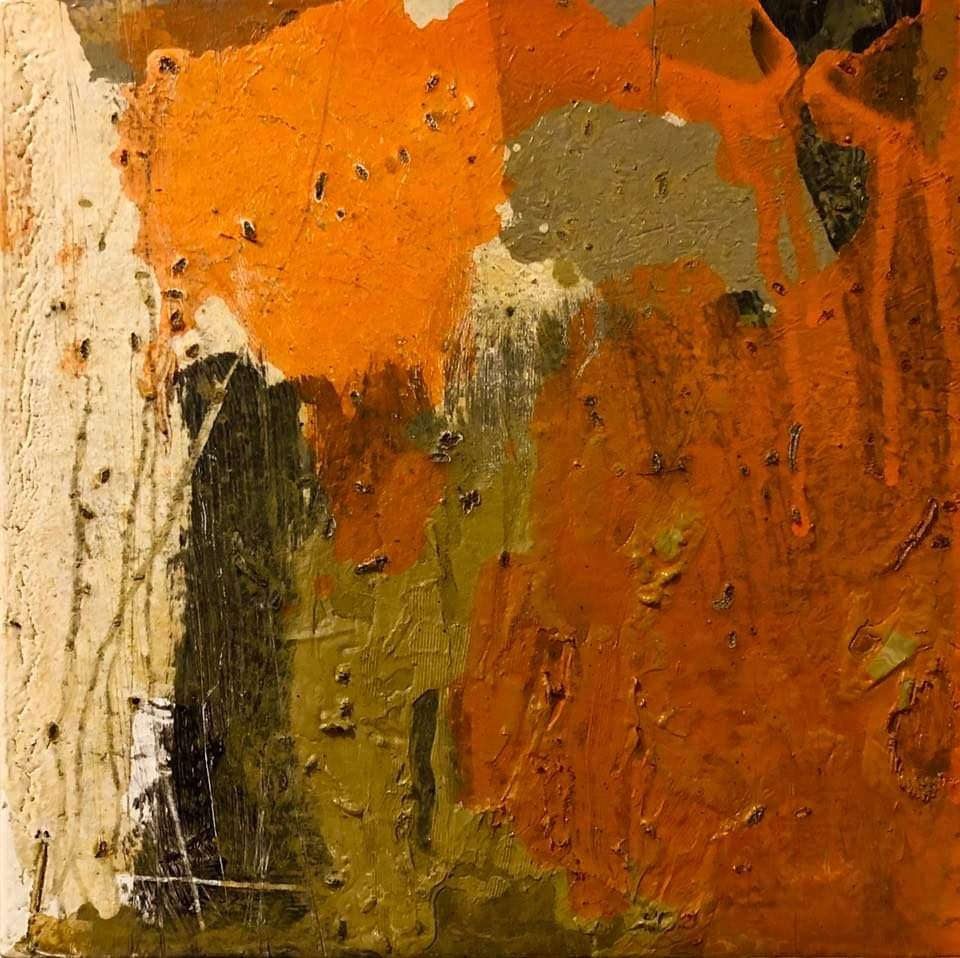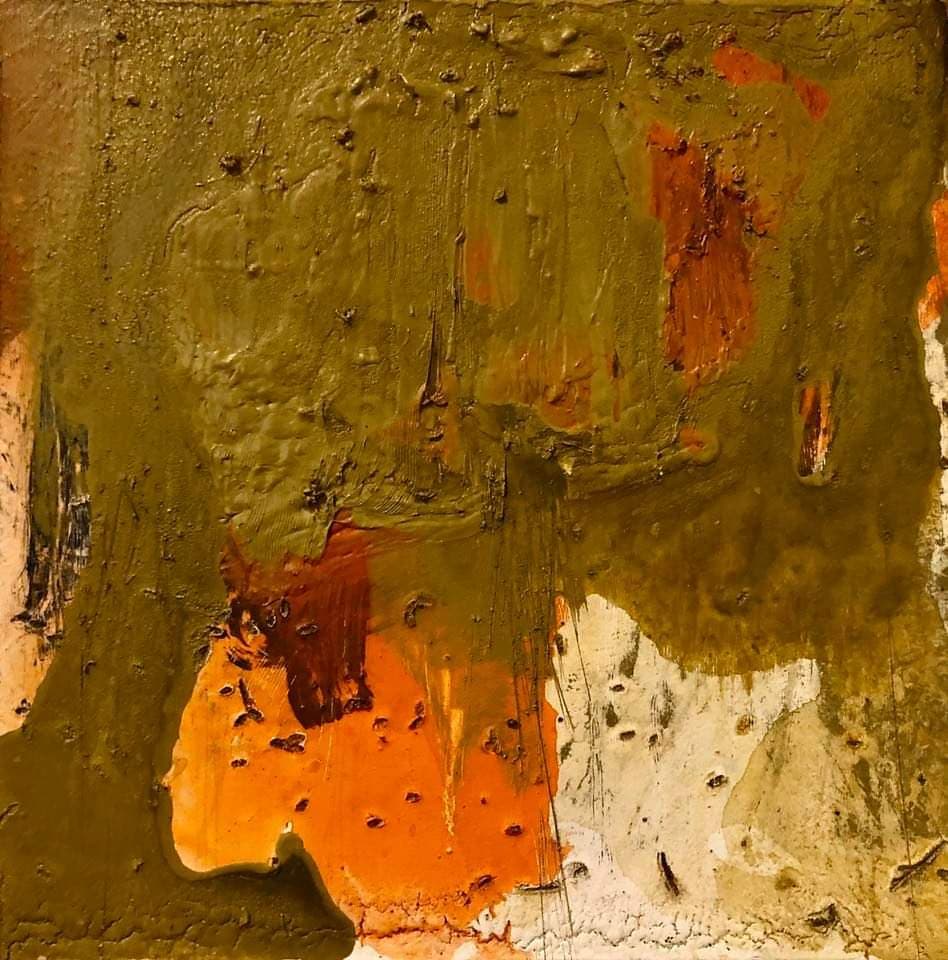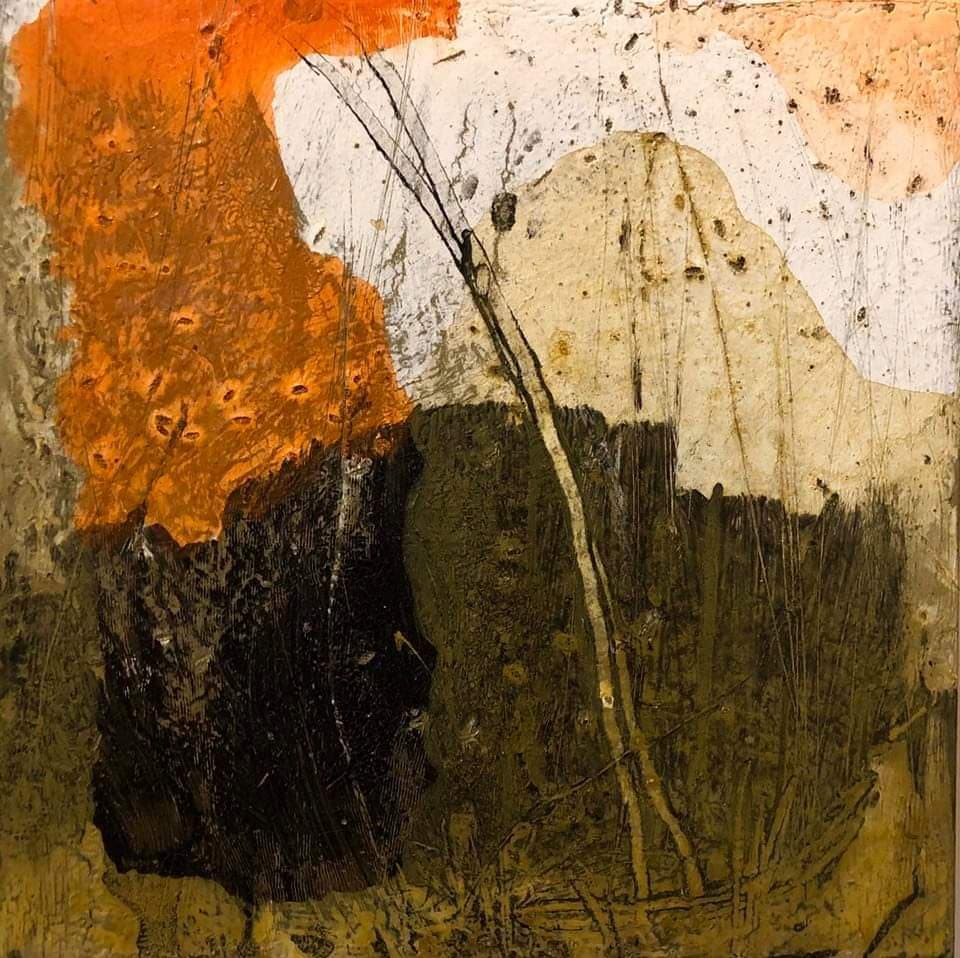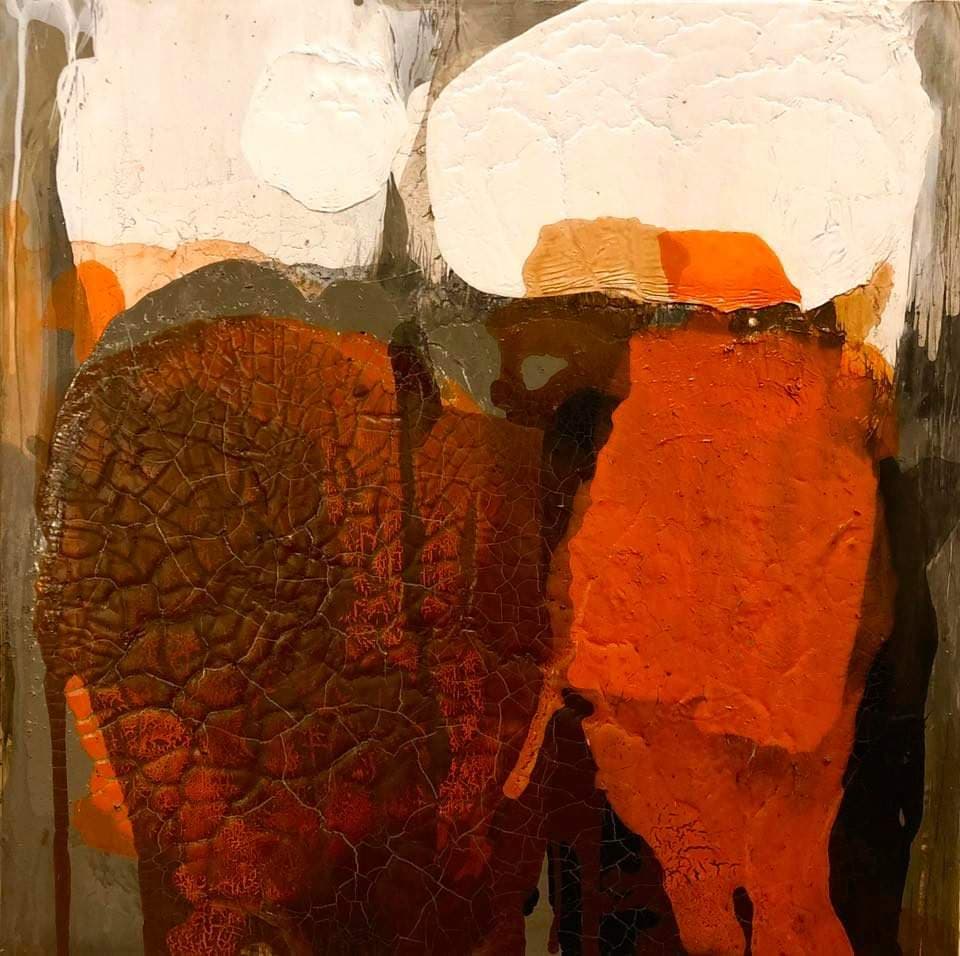Cirrocumulus Cloud Room 7
Cirrocumulus: predicts cold, but good weather.
András Wolsky
Cyrilla Mozenter
Joshua Dylan Rubin
Greg Baines
Cyrilla Mozenter
Joshua Dylan Rubin
Greg Baines
In this room, I have collected works together that narrate underlying structures, discovered in an almost archeological approach by either setting rules and rolling the dice to see which numbered rule corresponds to create a pattern and dynamic as in the work of András Wolsky, or in allowing chance to guide what feels right, in a language of asymmetry and symmetry, inlay and fields of chaos as in the felt works of Cyrilla Mozenter. Through the found and manipulated works of Joshua Dylan Rubin, we find something of a combination of forces, the worn linoleum guiding and reminiscing spills and stains, while the set rules of pattern remain intact. In Greg Baines' paintings, we find the curious layers filled with textures, craquelure patterns, much like the linoleum of Rubin's work, only this is the pure process of overlaying paint rather than a gathering of elements. For these artists, the process of making becomes a crucial element, a ritual of meditation, a time spent in a zone of contemplation, concentration, and drive to completion in spite of obstacles. While Cyrilla Mozenter has described the felt she uses as compressed chaos, Wolsky's materials describe and imply order, the use of rules, rulers, straight edge templetes turning clockwise from the corners to create specific line patterns from the axis of the 90 degree angles and central points of each side.
Rubin's works comprise the etchings of every day drudgery, laughter, emotion, as we walk across our floors, drop, and spill things, these works become evidence, an archeologist of the future might define how we lived through them someday. Baines' paintings become even more visceral, looking inwards, a broken heart, the blood, sweat, body shed and reconstructed, painful and hopeful, colors muted and pure, juxtaposed, but not in conflict.
Time is present in these works, willful, obstinate even. They present different approaches to our witnessing of elements inside and outside, connected to forces beyond our witness, but felt somehow.
Rubin's works comprise the etchings of every day drudgery, laughter, emotion, as we walk across our floors, drop, and spill things, these works become evidence, an archeologist of the future might define how we lived through them someday. Baines' paintings become even more visceral, looking inwards, a broken heart, the blood, sweat, body shed and reconstructed, painful and hopeful, colors muted and pure, juxtaposed, but not in conflict.
Time is present in these works, willful, obstinate even. They present different approaches to our witnessing of elements inside and outside, connected to forces beyond our witness, but felt somehow.
